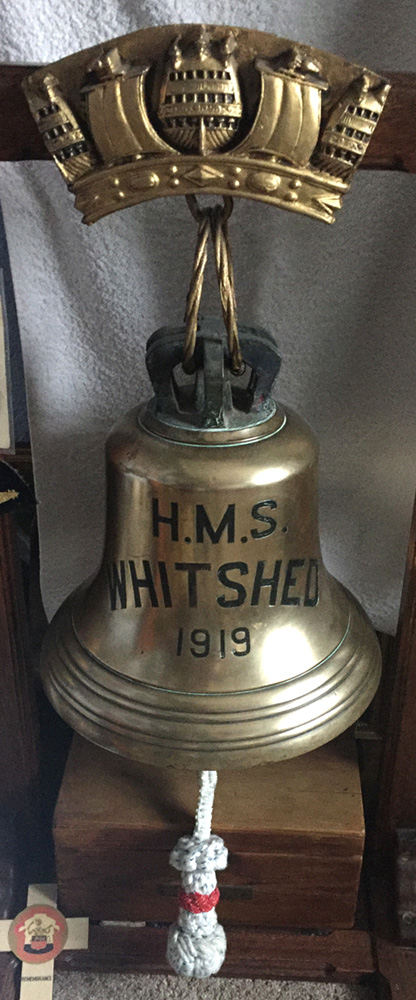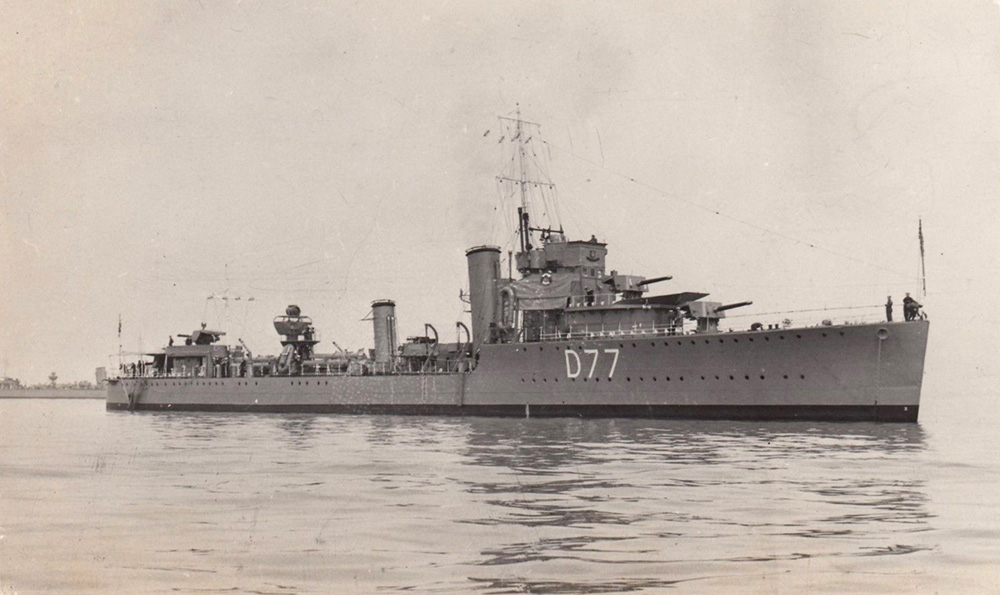
 HMS WHITSHED
HMS WHITSHED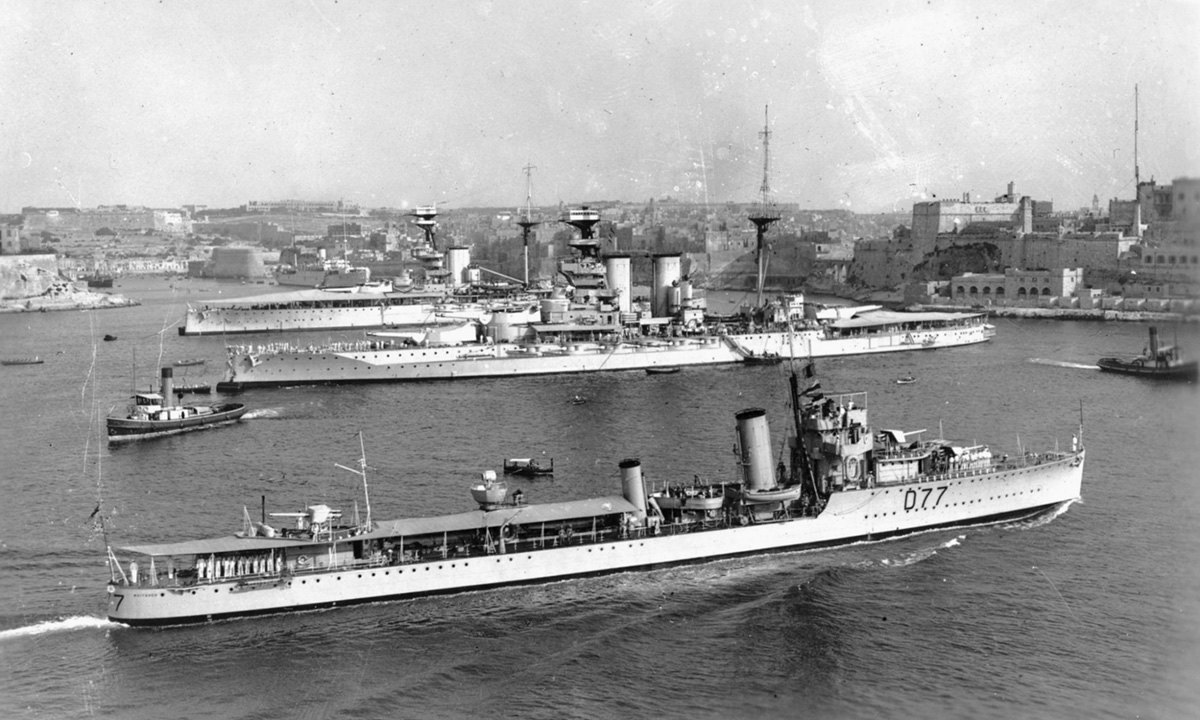
Commanding Officers
| Lt Cdr George Arthur Scott RN (July 1921 - Jan 1923) Cdr. Edward Reignier Conder, RN (15 Nov 1939 - Aug 1940) Lt.Cdr. William Anthony Juniper, RN (29 Nov 1940 - 9 Jul 1942) |
Lt.Cdr. Arthur Allison FitzRoy Talbot, DSO, RN (9 Jul 1942 - 14 Jul 1943) Lt. Tom Peter Baillie-Grohman, DSC RN (14 Jul 1943 - 12 Sep 1944) Lt. Robert Graham Woodward, RN (12 Sep 1944 - June 1945) |
Officers
| Temp Lt L M D Apperley DSC RNVR (22 May 1944 – by Dec 1944) Mid J P Bell RNVR (18 Nov 1939 – by Jan 1941) Temp Sub Lt B A Chadwick RNVR (30 Dec 1940 – by Nov 1942) Lt Will S Clouston RN (April - July 1937) Lt J S Drane DSC RN (8 Dec 1943 – by Dec 1944) First Lieutenant Temp Mid W D Duncan SANF(V) (2 Nov 1943 – Jun 1945) Lt (E) A V English RN (8 Jun 1937 – 7 Feb 1941) Temp Surg Lt P D Ferguson RNVR (12 Jul 1943 – May 1944) Sub Lt J H D Franklin RANVR (27 Dec 1940 – by Jan 1942) Wt Eng E W Fuller MBE RN (7 Feb 1941 – Jan 1944) Temp Sub Lt G Gillott RNVR (7 Feb 1944 – Jun 1945) Lt (E) R G Gross RN (17 Jan 1944 – Jun 1945) Temp Lt D A Haigh RNVR (8 Jan 1944 – by Dec 1944) Sub Lt D I Hayward RN (18 Nov 1939 – by Jan 1941) Gnr (T) C G Holdsworth RN (3 Sep 1940 – Mar 1942) Lt J L M Jolly RN (3 Jun 1942 – Dec 1943) First Lieutenant Temp Lt R W Johnston RNVR (2 Sep 1944 – Jun 1945) Lt Michael B. Laing RN (April 1924 - Jan 1925) Lt Michael "Dry Ginger" Le Fanu RN (March 1935 - August 1936) Lt Samuel R Lombard-Hobson RN (Nov 39 - 13 Aug 40) First Lieutenant Lt B C Longbottom RN (7 Dec 1940 – Jul 1942) First Lieutenant Actg Gnr (T) C V Mackenzie RN (17 Feb 1944 – Jun 1945) |
Gnr (T) A Matten RN Retd (4 Nov 1938 – Sep 1949) Temp Surg Lt N McSwan RNVR (30 May 1944 – Jun 1945) Temp Sub Lt R G Millist RNVR (22 Nov 1941- by Nov 1942) Temp Lt W J Mitchell RNZVR (22 Jul 1942 – by May 1944) Sub Lt P L K Needham RN (18 Nov 1939 – by Jan 1941) Lt A F D Openshaw RN (Oct 1943 – Jun 1945) First Lieutenant Surg Lt G J Potts RN (23 Dec 1940 – Aug 1942) Temp Surg Lt D W Pugh RNVR (18 Jan 1940 – Dec 1940) Lt P D Raisey RN (3 Jun 1941 – by Nov 1942) Gnr (T) R J B Stilwell RN (Mar 1942 – Feb 1944) Temp Sub Lt O L Sylvester SANF(V) (21 Nov 1944 – Jun 1945) Lt A M H Thomas RN (4 Nov 1944 – Jun 1945) Lt T S Trick RN (14 Jul 1942 – by Nov 1943) First Lieutenant Temp Surg Lt G R Walker RNVR (29 Aug 1942 – Jul 1943) Sub Lt A J Watkins RN (16 Dec 1940 – by Jan 1942) Temp Sub Lt V P Walker RNVR (29 Aug 1941 – by Nov 1942) Lt Alfred N. Waring RN (Feb 1929 - Feb 1931) Lt Herbert J. Watkins RN (Dec 1940 - Feb 1941) Temp Sub Lt W P Wilder RCNVR (25 Aug 1942 – by May 1944) Sub Lt P C Wood RN (9 Dec 1940 – by Jan 1942) Temp Mid A F Vyvyan-Robinson RNR (16 May 1944 – by Dec 1944) |
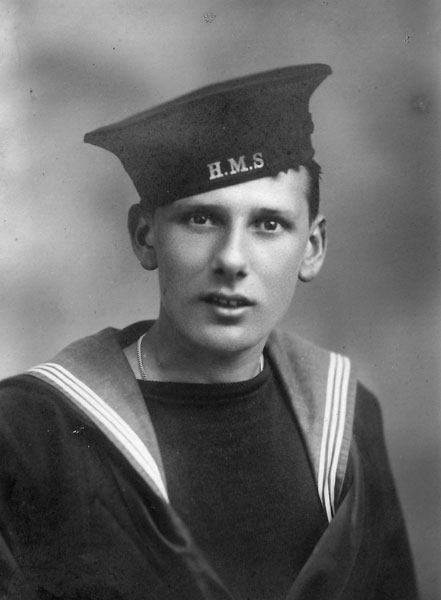 |
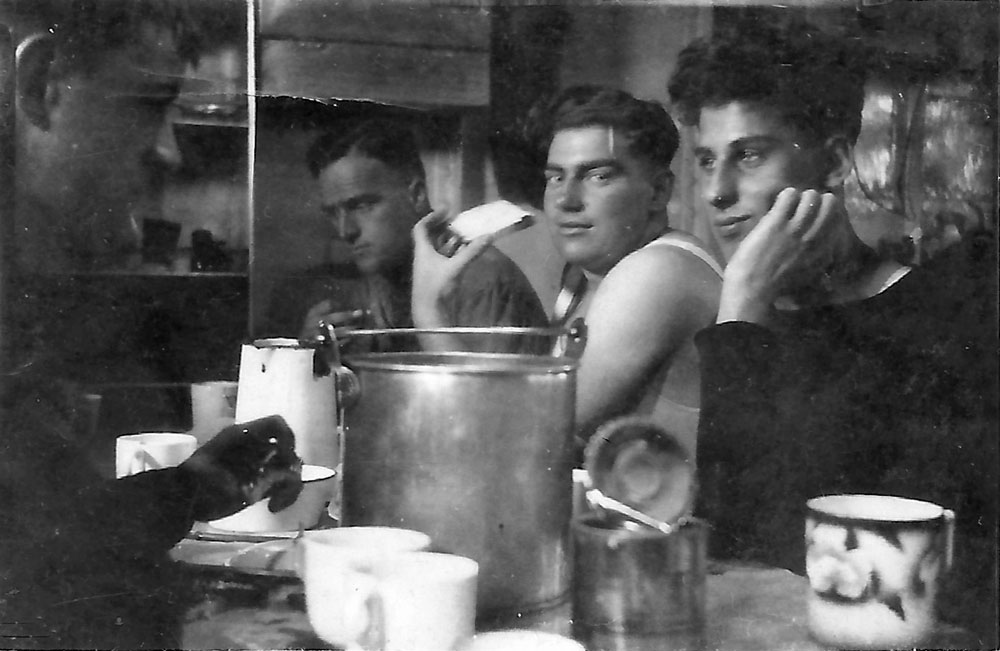 The "Boys in the Mess" on HMS Whitshed in 1940
A studio portrait of a your Reg Baker and a more mature photo after a few years service |
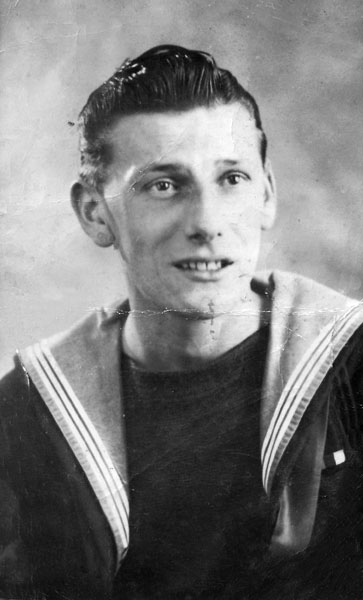 |
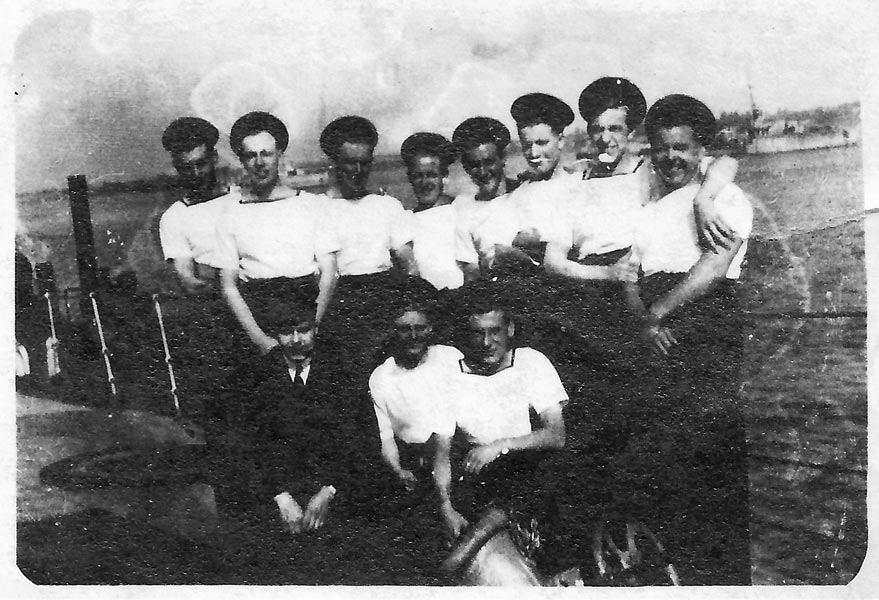 |
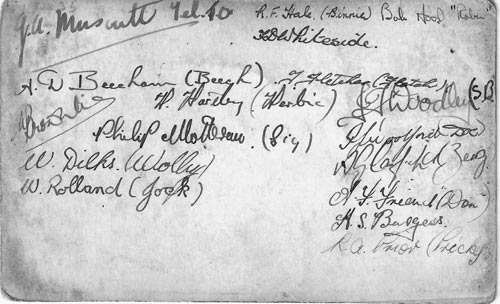 |
 |
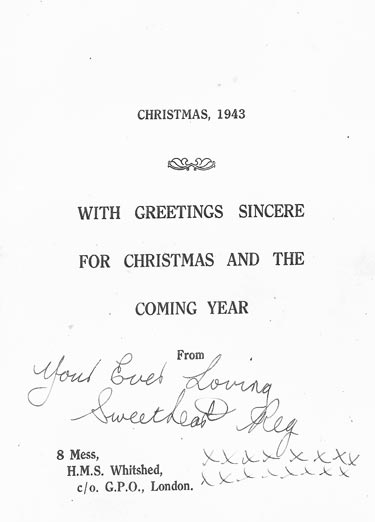 |
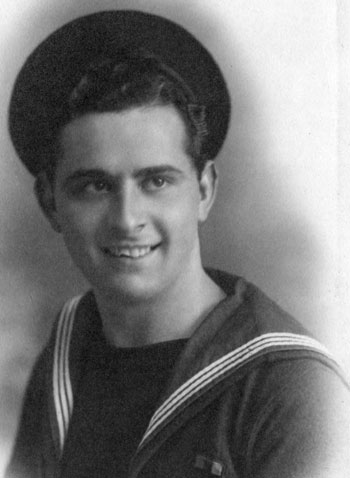 "My name was called out one morning, and lo and behold, I was sent to Harwich to pick up this HMS Whitshed.
I didn't quite know what it was until I got there, but being an old
World War 1 ship she was very crowded, and it took me a while to get
settled in. But there seemed a nice crowd of blokes on it anyway.
But being an Ordinary Seaman, you're in everybody's way. Any dirty jobs
going, you get them!"
"My name was called out one morning, and lo and behold, I was sent to Harwich to pick up this HMS Whitshed.
I didn't quite know what it was until I got there, but being an old
World War 1 ship she was very crowded, and it took me a while to get
settled in. But there seemed a nice crowd of blokes on it anyway.
But being an Ordinary Seaman, you're in everybody's way. Any dirty jobs
going, you get them!"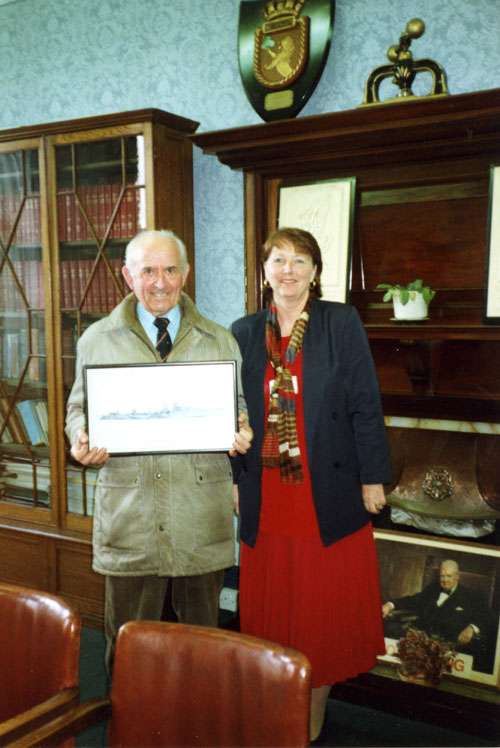 Jack Wood with the "Lord Mayor of Whitby"
Jack was mistaken - the lady was Val Bletsoe - now Val Appleton - Scarborough Borough Council The photograph was taken at the Borough Council's office in Whitby in about 1996 |
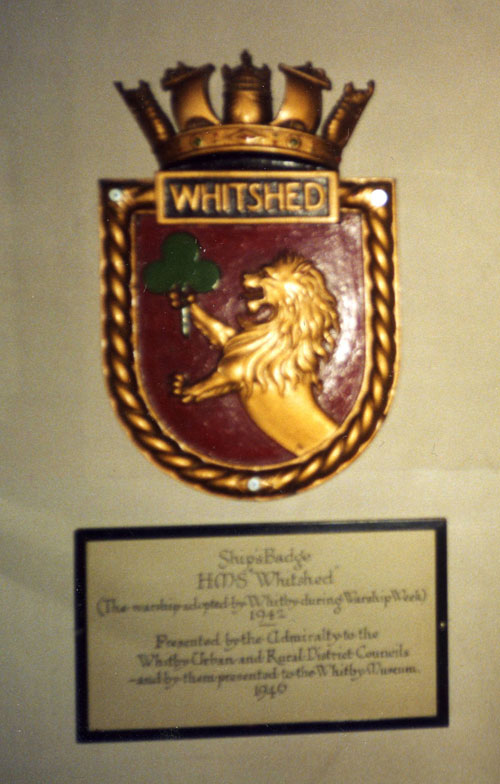 The 30 lb bronze Badge of HMS Whitshed was removed in 1946 and presented to Whitby It is now on display in Whitby Museum along with the painting presented by Jack With acknowledgement to Steve Barnard, Whitby Literary and Philosophical Society |
